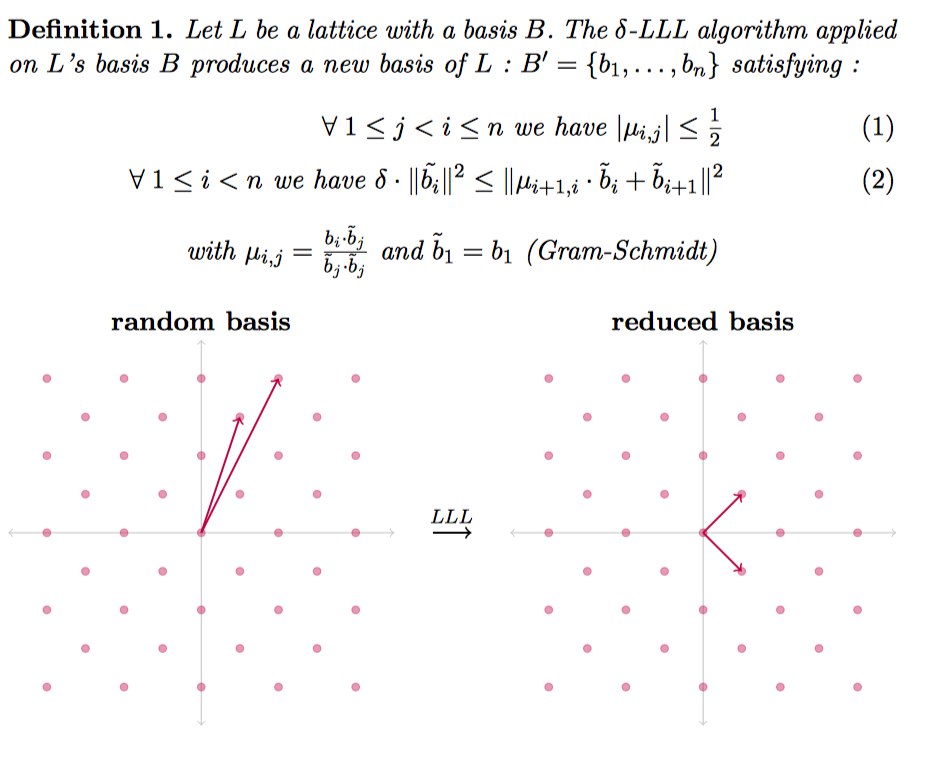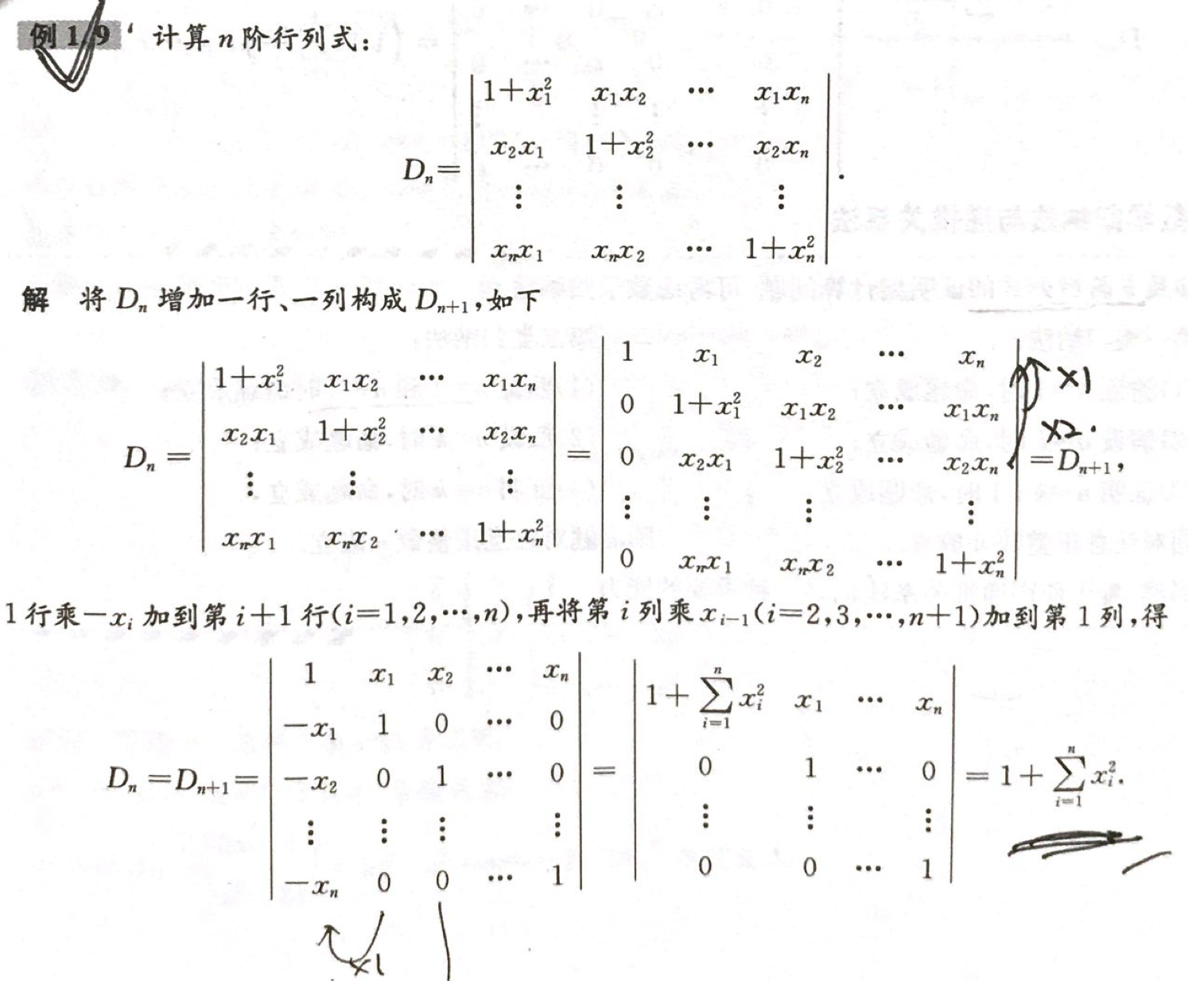格基规约¶
Lenstra – Lenstra – Lovasz¶
basic introduction¶
The LLL algorithm is to find a set of bases on the lattice, which satisfies the following effects.

Moreover, the following properties of the base generated by this method are very useful.

Simple application¶
Here I will give a second example from LLL paper. Given n real numbers \alpha_i,...,\alpha_n, find the rational linear approximation of the n numbers, ie find n numbers m_i, so that \sum\limits_{i=1}^{n }m_i\alpha_i is equal to 0 as much as possible. We can construct a matrix like this, where a_i is a rational approximation of \alpha_i.
The matrix is n*(n+1), we can find the determinant corresponding to this lattice according to the method of finding the determinant.
$ Det (L) = sqrt {AA} $ ^ T
We further consider such a matrix
Then
Further, let's try it from low-dimensional to high-dimensional (strictly prove that you can consider adding a row and a column, the upper left corner is 1), and the determinant of the lattice is
\sqrt{1+\sum\limits_{i=1}^n\alpha_i^2}
Can refer to the following proof of the postgraduate Yuge

Then after the LLL algorithm, we can get
||b_1|| \leq 2^{\frac{n-1}{4}} (1+\sum\limits_{i=1}^n\alpha_i^2)^{\frac{1}{2(n+1)}}
In general, the latter item tends to 1 when it is opened n times, because a_i is a constant and is generally not related to n, so
||b_1|| \leq 2^{\frac{n-1}{4}}*k
k is relatively small. In addition, b_1 is a linear combination of the original vectors, then
b_1[n]=\sum\limits_{i=1}^{n}m_ic*a_i=c\sum\limits_{i=1}^{n}m_i*a_i
Obviously if c is large enough, then the subsequent summation must be small enough to satisfy the above constraints.
Reference¶
- Survey: Lattice Reduction Attacks on RSA
本页面的全部内容在 CC BY-NC-SA 4.0 协议之条款下提供,附加条款亦可能应用。